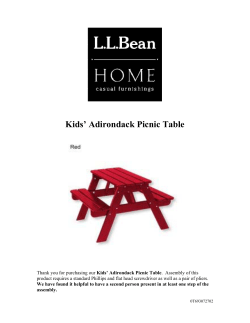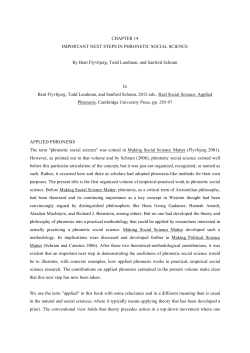
Tension members
UK EUROCODES Damascus University – Spring 2015 Instructor: Dr. Nachwan Khair Lecture 2 UK EUROCODES جامعة دمشق – كلية الهندسة المدنية الفصل الثاني من العام الدراسي 2014/2015 الدكتور المهندس نشوان الخاير Lecture 2 Tension members •A tension member transmits a direct axial pull between two points in a structural frame Lecture 2 In building frames, tension members occur as: • tension chords and internal ties in trusses; • tension bracing members; • hangers supporting floor beams. Lecture 2 Examples of these members Lecture 2 Lecture 2 The main sections used for tension members are: • open sections such as angles, channels, tees, joists, universal beams and columns; Lecture 2 The main sections used for tension members are: • closed sections. Circular, square and rectangular hollow sections; Lecture 2 The main sections used for tension members are: • compound and built-up sections. Double angles and double channels are common compound sections used in trusses. Built-up sections are used in bridge trusses. Lecture 2 Theoretically, the tension member is the most efficient structural element, but its efficiency may be seriously affected by the following factors: • The end connections. For example, bolt holes reduce the member section. • The member may be subject to reversal of load, in which case it is liable to buckle because a tension member is more slender than a compression member. • Many tension members must also resist moment as well as axial load. The moment is due to eccentricity in the end connections or to lateral load on the member. Lecture 2 End connections Comments on the various types are: • Bolt or threaded bar. The strength is determined by the tensile area at the threads. Lecture 2 End connections Comments on the various types are: • Single angle connected through one leg. The outstanding leg is not fully effective, and if bolts are used the connected leg is also weakened by the bolt hole. Lecture 2 Lecture 2 Design of tension members The resistance of tension members is covered in clause 6.2.3. The design tensile force is denoted by Nt,Ed (axial design effect). In Eurocode 3, similarly to BS 5950: Part 1, design tensile resistance Nt, Rd is limited either by yielding of the gross cross-section (to prevent excessive deformation of the member) or ultimate failure of the net cross-section (at holes for fasteners), whichever is the lesser. Lecture 2 Design of tension members The Eurocode 3 design expression for yielding of the gross cross-section (plastic resistance) is therefore given as Lecture 2 Design of tension members And for the ultimate resistance of the net crosssection (defined in clause 6.2.2.2), the Eurocode 3 design expression is The design tensile resistance is taken as the smaller of the above two results. For ductility (capacity design), the design plastic resistance of the gross cross-section should be less than the design ultimate resistance of the net cross-section. Lecture 2 Example: tension resistance A flat bar, 200 mm wide and 25 mm thick, is to be used as a tie. Erection conditions require that the bar be constructed from two lengths connected together with a lap splice using six M20 bolts, as shown in Figure. Calculate the tensile strength of the bar, assuming grade S275 steel. Lap splice in tension member with a staggered bolt arrangement Lecture 2 Example: tension resistance Cross-section resistance in tension is covered in clause 6.2.3, with reference to clause 6.2.2 for the calculation of cross-section properties. For a nominal material thickness (t = 25 mm) of less than or equal to 40 mm the nominal values of yield strength, fy, and ultimate tensile strength, fu, are found from Table 3.1 to be 275 and 430 N/mm2, respectively. Note that reference should be made to the UK National Annex for the nominal material strength. Lecture 2 Example: tension resistance The numerical values of the required partial factors recommended by EN 1993-1-1 are γM0 = 1.00 and γM2 = 1.25 (though for buildings to be constructed in the UK, reference should be made to the National Annex). Gross area of cross-section A = 25 × 200 = 5000 mm2 Lecture 2 Example: tension resistance In determining the net area, Anet , the total area to be deducted is taken as the larger of: 1. the deduction for non-staggered holes (A–A) = 22 × 25 = 550 mm2 = 25 × (2 × 22 – 902/4 × 100) = 594 mm2 (> 550 mm2) Therefore, the net area of the cross-section Anet = 5000 – 594 = 4406 mm2 2. , Lecture 2 Example: tension resistance The design plastic resistance of the gross crosssection Npl, Rd = 5000 × 275/1.00 = 1375 kN The design ultimate resistance of the net crosssection Nu, Rd = 0.9 × 4406 × 430 /1.25 = 1364 kN The tensile resistance, Nt, Rd, is taken as the smaller of Npl, Rd (1375 kN) and Nu, Rd (1364 kN). Nt, Rd = 1364 kN Note that for the same arrangement, BS 5950: Part 1 gives a tensile resistance of 1325 kN. Lecture 2 Angles with welded end connections Clause 4.13 of EN 1993-1-8 states that for an equal angle, or unequal angle welded along its larger leg, the effective area = gross area. Lecture 2 Angles with welded end connections The gross cross-sectional area of an equivalent equal-leg angle of leg size equal to that of the smaller for an unequal-leg angle connected by its smaller leg. Lecture 2 Angles with welded end connections Lecture 2 Angles Connected by a single row of bolts Refer to EN 1993-1-8. Lecture 2 Angles Connected by a single row of bolts For 1 bolt: (3.11) For 2 bolts: (3.12) For 3 or more bolts: (3.13) Lecture 2 Angles Connected by a single row of bolts Values of reduction factors β2 and β3 can be found in Table 3.8: Lecture 2 Lecture 2 Tension Member Design Steps Summary 1. Determine the design axial load NEd 2. Choose a section 3. Find fy and fu from the product standards 4. Get the gross area A and the net area Anet Lecture 2 Tension Member Design Steps Summary 5. Substitute the values into the equations to work out Npl,Rd and Nu,Rd (6.6) (6.7) Lecture 2 Tension Member Design Steps Summary For angles connected by a single row of bolts, use the required equation to work out Nu,Rd from EN 1993-1-8 which will depend on the number of bolts. For 1 bolt: (3.11) For 2 bolts: (3.12) For 3 or more bolts: (3.13) Lecture 2 Tension Member Design Steps Summary 6. The design tensile Resistance is the lesser of the values of Npl,Rd and Nu,Rd 7. Carry out the tension check N t , Ed N t , Rd 1.0 Lecture 2 (6.5) مالحظة هامة: يمنع الكتابة على الكود منعا ً باتا ً وإضافة أي جداول غير المصرح بها من قبل أساتذة المقرر. Lecture 2 Thank you Dr. Nachwan Khair Lecture 2
© Copyright 2025










